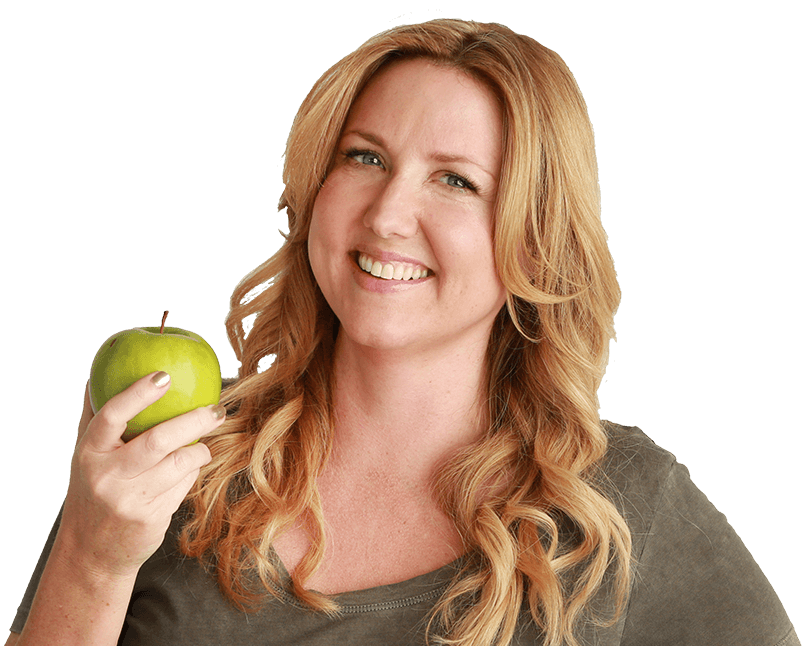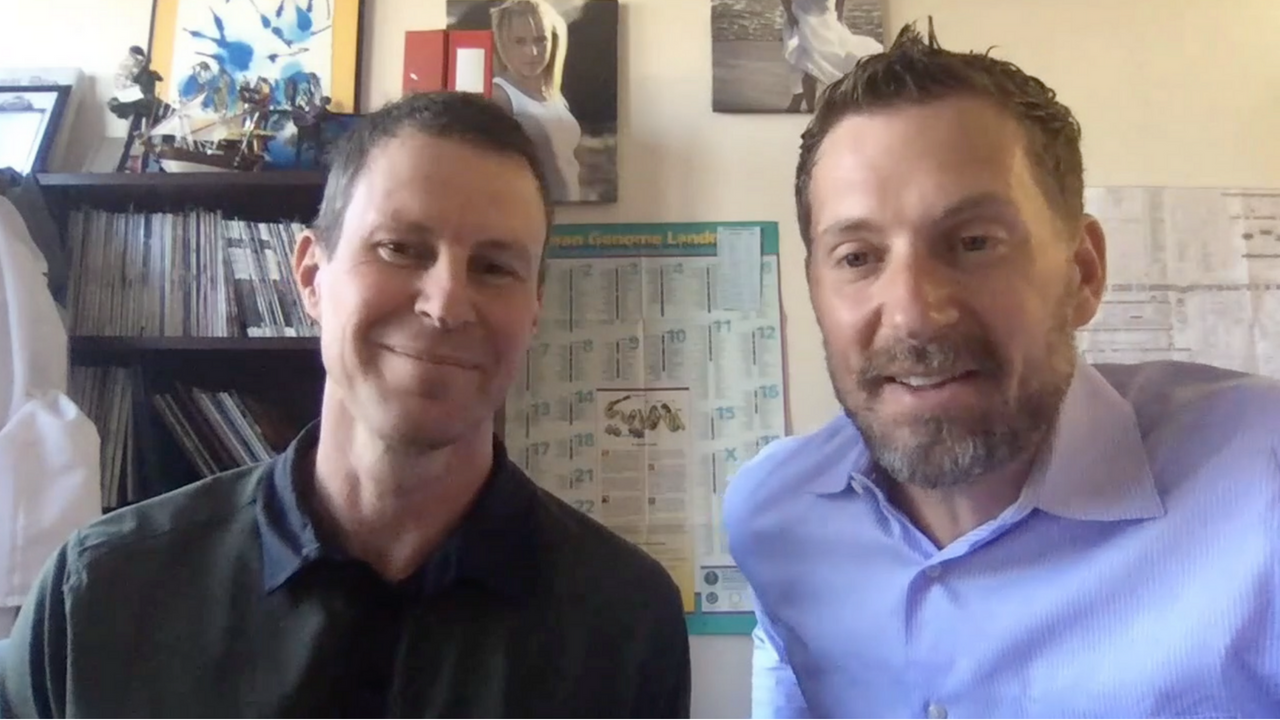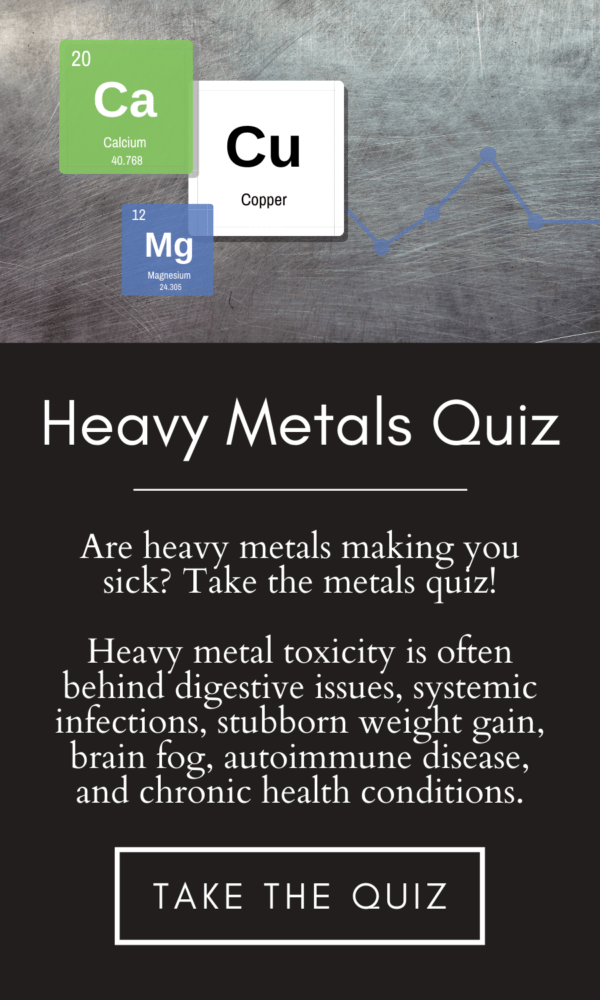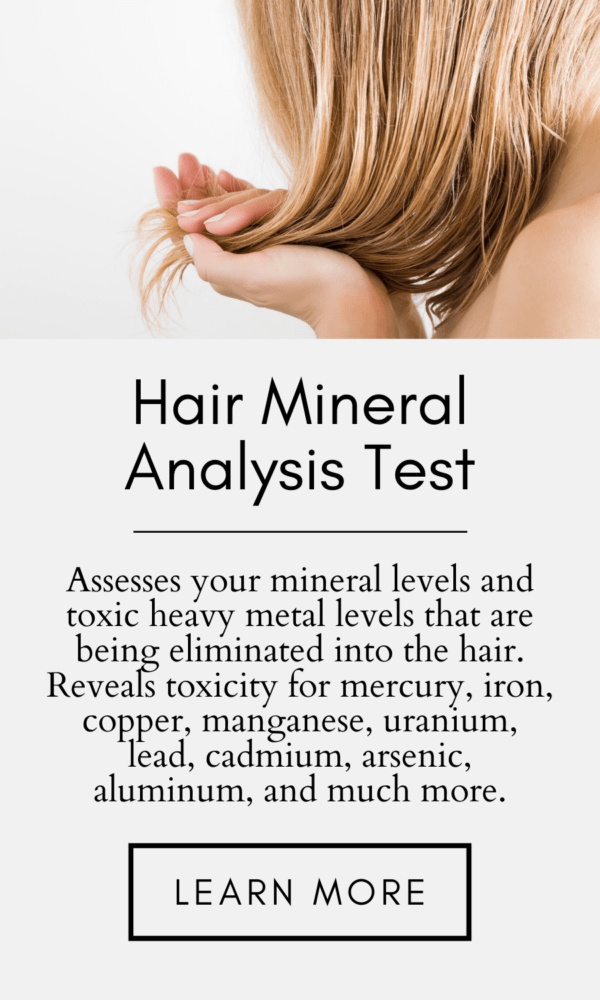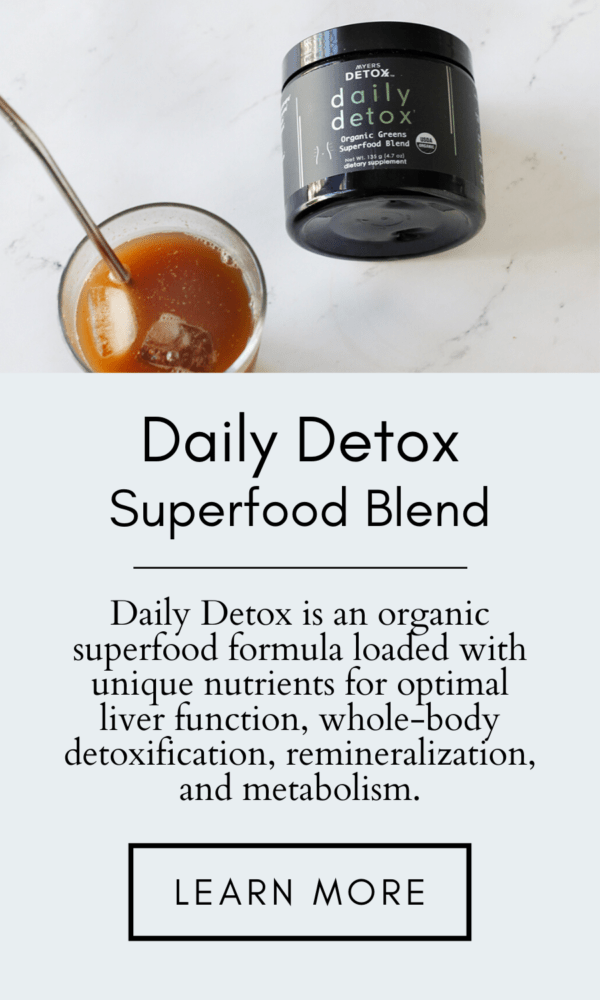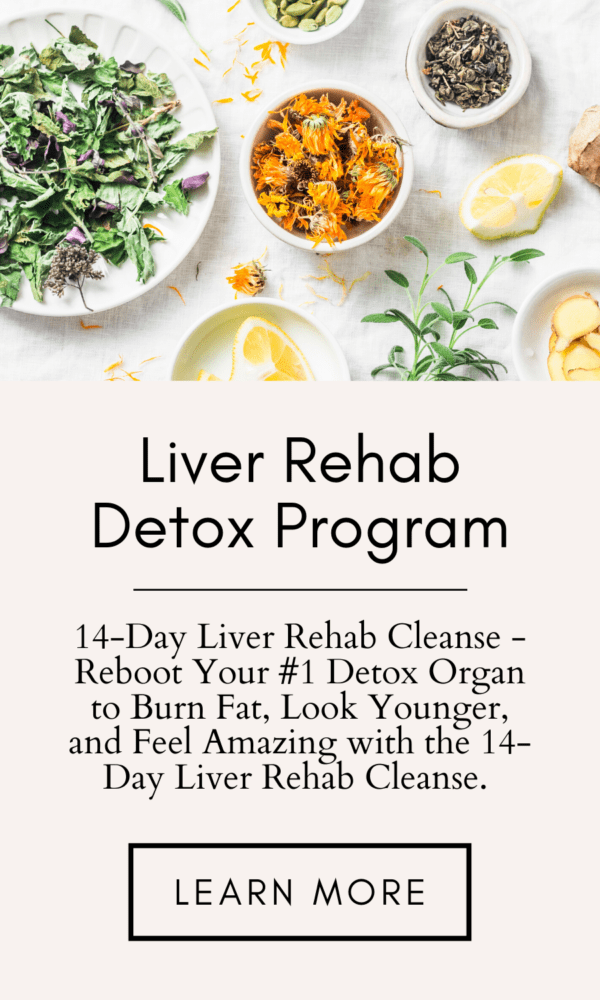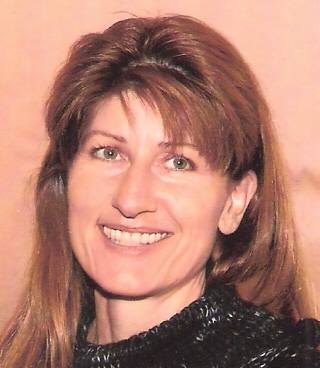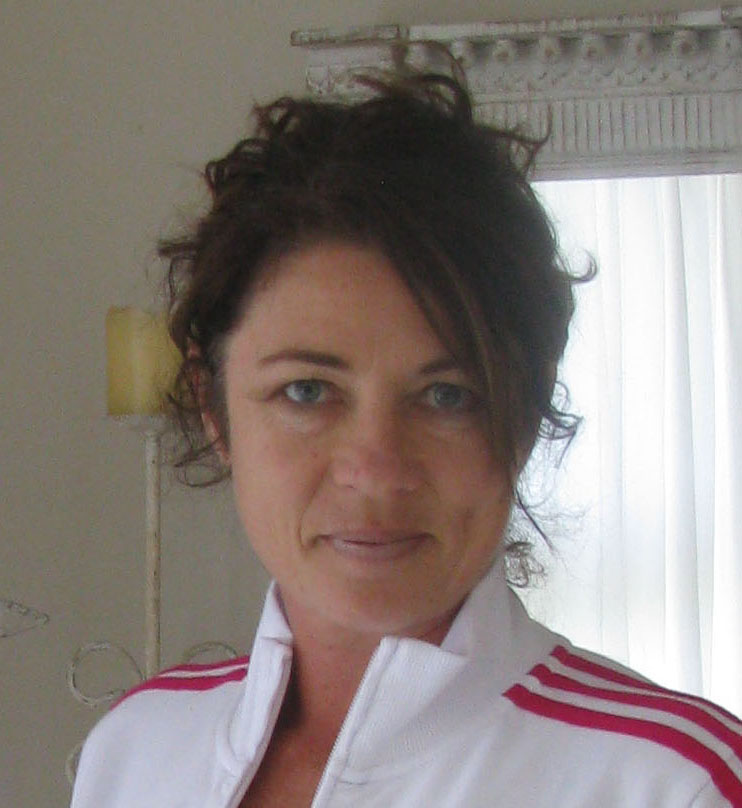Listen
Listen to this podcast or watch the video. CLICK HERE
Transcript
Wendy Myers: Hello, everyone. Thank you so much for joining me for the Live to 110 podcast. My name is Wendy Myers. You can learn more about me at MyersDetox.com. Today, we have my very good friend, Warren Phillips, and one of his partners, Dr. Shayne Morris, on the show today. We’re gonna be talking about detox pathways. We’ll be talking about different types of binders that you can use to clear up the detox pathways, what make the detox pathways break down and no longer work anymore, and how that affects your body. Lots of amazing tips and tricks for all you detox fanatics out there on the show today.
I’m really excited. I have a new quiz that you can take to assess your heavy metal toxicity load. You can go to MetalsQuiz.com, and take the quiz, and find out if you have a low, kind of medium, or a high risk for heavy metal toxicity and what you can do about it. So, go to MetalsQuiz.com to take the quiz. Today, we have Dr. Shayne Morris and Warren Phillips on the show. Dr. Shayne Morris is a PhD. He works ar Systemic Formulas and is a published molecular biologist, herbalomic detoxification expert. Dr. Morris’s specialty and research is in the body’s epigenetic response to herbal nutrition and microbiome technologies. Dr. Morris’s cutting edge research is recognized as exactly what is needed for nutritional solutions in the 21st Century. Dr. Morris’s research is chronicled in a series of research reports available to health professionals.
Warren Phillips, our other guest on the show today, has received his masters in geology in 2010 with a focus on heavy metal toxicity and human exposure pathways in air, soil, and water. He published his research and decided to help clean up the planet as a career. Warren started his career as a credentialed environmental geologist in Montana, and his background in chemistry and environmental science led him to understand the impact synthetic chemicals, heavy metals, and environmental toxins have upon the human condition.
Unfortunately, he did not realize he would be the ultimate test case for environmental and heavy metal poisoning while on the job performing abandon mine federal used offense sites and other environmental cleanups. These metal exposures he dealt with, even with best practices, left him sick, hopeless, and at times struggling to find a reason to live. He was very, very ill. His battle with labels, such as fibromyalgia, anxiety, weight gain, insomnia, and numerous other health challenges sent him on a journey with the traditional medical community, and they could not answer, like many people today. After years of trying, he finally explored alternative and natural methods for heavy metal detoxification, dietary changes, and cellular support that restored his health after over five years of doing the right things.
After he got healthy again, he knew it was for a bigger purpose. Knowing he could impact upon those in need, like himself, he pursued partnering with independent healthcare practitioners to empower them and the public to protect themselves from being compromised by environmental illness that the mainstream medical and field didn’t yet understand. Warren has now served this mission for 12 years, empowering health experts, creating unique detoxification supplements, and educating the public through podcasts and seminars. Warren left his traditional career in environmental consulting in 2005 and is now the co-founder of Revelation Health LLC, a wellness company dedicated to answering the call of individuals searching for health answers. You can find Warren at RevelationHealth.com. Thank you so much for coming on the show.
Warren Phillips: Thank you, Wendy. What I want to do now is really introduce you to the man of the hour here, Dr. Shayne Morris, real quick. I know a little bit about Shayne, and he’s gonna tell you about his legacy and his family. He comes from a long line of healers and scientists. His grandfather, Doc Wheelwright, is world renowned, traveled the world, a crazy man, brilliant, [crosstalk 00:04:48] off the charts brilliant. Their legacy is actually incredible. Actually, instead of me telling that story, you tell them that story about kind of the legacy that your family has and why you’re on this journey. I’m a sick guy that fell into natural health and the movement, but your family actually have been on this for generations, for at least a generation, and it’s a pretty powerful story.
Dr. Shayne M: Yeah. It’s in our genetics. Yeah. It goes back a ways. My grandfather, of course, he was, like you said, a renowned herbologist and traveled the world. Back early on, he started a company called Life Centers. That company eventually split into Systemic Formulas and another one called Pro Pack. The family kind of took two different kind of companies and kept them going. I started with one back in the 80s, and that’s when I learned how to formulate. I learned how to run operations, and production, and many, many talents on the floor.
You know, we made a lot of products that in the 80s were unheard of. It was all natural products. We were the first people going to APHA meetings, the first people going to supply shows. We were bringing materials into the country from all over the world, and the FDA didn’t know what to do with them at that point, because it was so early in generation of this industry. Then as we evolved, I decided our industry not only needed to continue to help people, from a healing standpoint, but we need some validation. So, I pursued some degrees. I got my chemistry and micro bachelors. Then I pursued a masters.
Then I got a PhD in biochemistry and then, of course, a masters in business, all along the journey to help guide us into a sustainable future, not just a healing future, but one where we can substantiate a lot of our products with science, and we can do things clinically that we couldn’t do before, and we can measure our results. That was all before that wasn’t easy to do, and now we can do. That’s really what brings us to where we are now, where we can take all these healing herbs, and nutrients, and foods, and we can understand them better, which means we can also study them and apply them to conditions like detoxification in a way that you’ve never applied them before.
I think one of our key phrases is cellular detoxification. That’s so much different than just detoxification, which as we all know, whether you go back into any book, biblical and so on, detoxification has been a term used in every culture for millennia. We need to get down to the 80,000 toxins that we’re now exposed to, and to do that we call it cellular detoxification, because it changes your way of thinking. It’s not simply a fast. It’s not simply a lot of water or bowel movements. It’s way more than that.
Warren Phillips: And we all like pooping.
Dr. Shayne M: Those are important. Yeah. Those are [crosstalk 00:07:35], but it’s more, and it’s a lot more to be effective. That’s kind of what brings us to to today, you know, the pathways of detoxification.
Warren Phillips: Before we jump into the pathways, what I want to share, Wendy, is what I find really interesting about his story is that his grandfather would go into like witchdoctors, if you will, into the Brazilian rainforest-
Dr. Shayne M: And the Amazon.
Warren Phillips: … and the Amazon and hang out with all these tribes, learning these herbs. There’s some for rite of passage. There’s some for health and healing different ailments, even spiritual journeys, if you will. I don’t know. He probably did some of that stuff. I’m not sure.
Dr. Shayne M: Yeah. For sure. I think he did. Yeah.
Warren Phillips: But now, it’s what ancient cultures have learned from the Earth for health, healing, detoxification. If you get poisoned, you take another herb to get that out of your system or to render that harmless, however that would be. Now, this generation, we’re actually putting science to some of the herbal frequencies, energies, detoxification obviously, but the healing modalities, this herbalomics, how herbs affect your genetics. Shayne is able to do some of those cool things now and work with the microbiome and a lot of the different things we’re able to do. So, we’re taking the stuff that was anecdotal and really applying the science to it. Shayne’s also published a few papers too on that.
Dr. Shayne M: The exciting thing about us, we’re validating our earlier beliefs. We’re not invalidating. You know, people see science sometimes as the bad guys, the bully, when really what it’s showing is that a lot of our ancient ethnobotanical beliefs are real, and they can be validated, so we don’t need to abandon them. We need to embrace them. That’s the power of science, to help you give that extra bit of information for every group that we talk to, not just the people that are already embracing them. We can now involve people that didn’t used to embrace healing. We can give them science, and now they embrace it. So, it really brings those two very diametrically opposed concepts together. It’s a bridge. It acts like a bridge.
Warren Phillips: Yeah. The one reason I didn’t jump into natural health and healing, Wendy, because I was told growing up that stuff didn’t work, or it was the fringe people, you know, just lumped that all together. Today, that’s not the case, and there is a lot of science. I’ll stop with that.
Dr. Shayne M: That’s the [inaudible 00:09:47] in the pathways, right?
Warren Phillips: Yeah. Yeah. That’s awesome.
Wendy Myers: Yeah. Yeah. Let’s talk about that. Let’s talk about the various detoxification pathways and how exactly they remove various toxins from the body.
Dr. Shayne M: Yeah. So, we have a number of pathways, and we genetically refer to them over the years as phase one, phase two detox, and recently you’ve heard of phase three. Most of these pathways happen in the liver, which is why we really focus on our liver as a detoxification, whether it’s alcohol overdose or chemical exposure, even heavy metals. In the past, medically we focused on the liver. Then following the liver you look at the kidneys and the colon for the elimination. That’s getting rid of a lot of the toxins that the liver has processed, right? Those are the key organs we focused on. We’ve called it phase one, phase two, phase three.
Chemically speaking, phase one happens to have in the liver or in the cells a group of enzymes that essentially oxidize toxins. If you’ve consumed glyphosate for example, the first thing it does is it passes through the liver or the bloodstream. It passes through the liver. The liver tries to oxidize glyphosate. Then the second, phase two, is where it attaches things like methyl groups, glutathione, sugars, and those attachments to a chemical or to a compound, even if it’s a heavy metal, that targets that compound for elimination. So, phase three is elimination. Now, the body says, “Look. This one’s been methylated, acetylated. It might have glutathione attached.” Then it says, “Okay. Get rid of this chemical. Let’s run it through the gall bladder. Let’s put it in the bile, secrete it into the colon, or let’s throw it to the kidney, get rid of it, or even push it to the skin,” depending on where the detoxification happens.
Wendy Myers: Yeah. Phase three is like taking out the trash basically.
Dr. Shayne M: Taking out the trash. Exactly. Those are the phases that we understand, and those are essentially cellular phases on a macro scale, but-
Warren Phillips: Is that why my brother stunk after he’d go out parting?
Dr. Shayne M: Absolutely. Absolutely.
Warren Phillips: Yeah. I always wondered why. Because it’s phase three.
Dr. Shayne M: Alcohol creates a lot of aldehydes, and aldehydes stink on your breath and other things. Those are the ways we used to think of it, and that’s brilliant. Those are still very effective. The liver’s important. You guys have heard the cytochrome enzymes? The cytochrome enzymes are found in the liver. Those are the detoxifying enzymes. Glutathione transferases, methylases, catalases, those are all enzymes in the liver that help us get rid of toxins, but where does that happen? I want to take this deeper. Those are the phase one, phase two, phase three, but those happen … When we think of a tissue, that’s fantastic, right? We’re thinking of the skin, the liver, the kidney. Focusing on the liver, that’s the tissue, but what about the cells? What’s happening inside the cells?
What we’ve studied and the reason we focus on this is everything happens inside the cell. The liver is made of cells. Inside each cell in the liver there’s something called the smooth endoplasmic reticulum. That’s a big word. I know. It’s like the nucleus that holds the DNA. It’s another organelle. But because the smooth endoplasmic reticulum … I’m gonna call it the ER for short. Because the ER, its entire job is to manage toxins, so all those enzymes we spoke about in phase one and phase two, they all exist inside the ER, inside the cells, inside the liver.
Warren Phillips: Only in the liver cells?
Dr. Shayne M: They’re in other cells as well. The liver, because it’s the main organ that does this work, it has a larger by orders of magnitude sizes of ER in the cells. If you look at a cell, it’s packed full of ER in the liver, because it’s a detoxification cell, which means it needs a lot of workers in there doing it. That’s the ER. Inside the cell we focus on the ER. The ER needs special nutrients. It needs special herbal components. It needs special minerals to help drive it. It needs a lot of energy. It uses a lot of energy, called ATP.
Now, we’re looking inside the cell, in the ER, to say if the ER is unhealthy, then the liver’s unhealthy, then the human’s unhealthy. That’s really how you build up from inside the cell, and that’s kind of our niche. That’s what we focus on when we formulate or when we do our research. We look deep inside to find out what’s actually doing the work.
Wendy Myers: Yeah. How does somebody’s detox pathways get shut down? Because many people know they need to detox. They test for lead, and mercury, and arsenic, and other metals on their metals test, but many times people are too sick to detox, and they have to do some things to kind of clear their detox pathways. First, let’s start with what can shut down a detox pathway?
Dr. Shayne M: That’s a great, great point. I mean, that leads us back to the cell. When you have the ER that requires all those things, as I mentioned, imagine during phase two if you don’t have enough glutathione, then the ER’s gonna shut down, because it needs glutathione to attach to compounds like mercury, for example, to shuttle it out of the body. Well, if you’re not making enough glutathione, then you have to slow down production. You have to slow down everything, and so you bind up those pathways.
The same thing can happen with methylation. If you don’t have enough methylation going on, which includes things like B12, methylcobalamin. It includes the methylenetetrahydrofolate, and that also speaks to the genetic component that we have, where we can be weak in some of these enzymes, and weak in some of these pathways genetically, so we have to ramp up the amount of methylfolates we eat. We have to ramp up the B12 we eat. We have to ramp up the glutathione we take and so on, in order to super charge these pathways. Another really strong association is between the mitochondria and the ER. If your energy factories, mitochondria, are having trouble, they’re not making enough ATP, you shut down your pathways.
Wendy Myers: Exactly. [crosstalk 00:15:32] Can you define methylation for anyone who may not know what that is?
Dr. Shayne M: Yeah. That’s a good call. In chemically speaking, a methyl group is a CH3. That’s not important, but what it means is that little chemical gets attached to a number of other chemicals in your body. That’s called methylation. If we methylate DNA, that can act as a switch to turn DNA on and off. That’s called an epigenetic switch, and it’s done by methylating DNA and un-methylating DNA. That’s a switch, on and off. You can methylate a compound and create dopamine, so it’s used to make neurotransmitters. You can also methylate compounds to signal them to be destroyed or to be … like you say, take the trash out. That’s a phase two process of methylation. So, you’re adding a chemical compound to something else, whether it be to mercury, to glyphosate, to plasticizers. You can methylate in order to target some of these compounds out of the body, as well as a number of other things.
Wendy Myers: And so, what are some of your-
Warren Phillips: Go ahead.
Wendy Myers: Go head. Go ahead. Sorry.
Warren Phillips: I was gonna kind of put that into reality about methylation, because I am drinking out of plastic today, and I’m normally [inaudible 00:16:38] I’m down here with Dr. Shayne [crosstalk 00:16:44]
Wendy Myers: Hey. You can’t win them all. Sometimes you have to do that.
Warren Phillips: … special project that we’ll tell you about later. Methylation is so key, because when I was sick and stressed out, you exercise. You know, that causes toxins that need to be methylated. Correct?
Dr. Shayne M: Yeah. Those are metabolic wastes that your body makes. Yeah.
Warren Phillips: Metabolic waste. Yeah. Or your cortisol levels are high, because you’re stressed out over something, and you need methylation for that, or you’re going through … Women’s menstrual cycles, lots of methylation needs to happen with the hormones. Same with guys. We have all those things going on with methylation. Then you add toxins, all those things. The reason I’m saying this is methylation was really key for me to start getting my brain to work better, to get that cellular energy working better. I was just deficient in methylation, and methylation was a game changer for me. So, from a practical standpoint, the sick guy versus the scientist, the methylation really fixed a lot of those issues, where I could start working out again, where I could start detoxing again, and it was just a real blessing.
Dr. Shayne M: Well, he brings up a physiological phenomenon called the priority principle too, be if you need methylation for some of these physiological biochemistry, it’s going to steal to make sure you maintain the safety ones, and you ignore the ones that can go on for a while, and that’s what happens with people. They’re surviving, and they’re feeling okay, but they’re robbing from other areas that over time build up, and then pretty soon they crash, because the body’s gonna prioritize daily survival, as opposed to long term survival, and so the methylation that happens later.
That’s how we pass it on to our children. Epigenetics passes on, so when you don’t methylate your DNA in lets say eggs in the ovary or in the spermatozoa, you pass those loss of methylation on, because the body knows that that’s not an immediate risk. Eggs and sperm aren’t an immediate risk to you, so you pass those on to your next generation if you’re not properly nutrient dense to methylate properly. Yeah. It’s a priority principle.
Wendy Myers: Yes. Yes. That’s why a lot of people today, they built up a lot of toxins in their body. Their body is trying to methylate them, detox them, get them out of the body. It does that at the expense, this is generally speaking, or hormone production, of energy production, of other really important functions of the body. Let’s talk a little bit about what are some of your favorite binders? So, binders, really important in detoxification. What toxin binders work best, and why?
Dr. Shayne M: Yeah. We like a lot of binders. You’ll notice that we use a number of different binders for a lot of reasons, and that’s a great question, because I think that’s a question that I think people really miss. I would say they misstate binder efficacy. For example, let’s talk about we have zeolites or clinoptilolite. Those are really mineral binders.
Warren Phillips: Inorganic binders.
Dr. Shayne M: Inorganic binders. Then we have things like folvates and humates, which people have heard of. There’s lignites as well that fall into that category.
Wendy Myers: Before you mention, it’s folvic and humic acid is how it’s primarily known as.
Dr. Shayne M: Yeah. Thank you. Yeah. Exactly. I call them folvates and humates, but yeah, it’s folvic acid, humic acid. There’s one called … It’s out of Ayurvedic medicine. It’s [sheduite 00:19:59]. I never say it right, but that’s very similar from a composition to the humic and folvates. Then we have things like chlorella, the blue/green algae, chlorophyll, carbon. Carbon’s a great one. As you run the spectrum, we’re going from really inorganic to really organic. They all have different properties. That’s really important, because when we talk about binding up metals, remember, metals have a positive charge. All heavy metals have a positive charge, metals in general.
We know that the best binders for those tend to be something like a chelator, which can be something like EDTA or DMSA, which are specific to chelating minerals. Then we take into consideration the clinoptilolite or the zeolites. They also bind positively charged metals. We’ll get back to some other cool features with those, but those are good metal binders. They do it through, it’s a cage, and it’s called ion exchange. Not something we’ll go into today, but they do a really good job at binding up minerals.
Then as we move down the spectrum to let’s say the humates and humic acid, folvic acid, lignites, and so on, they also can bind heavy metals, and they tend to bind as well some organics. Now, we’re getting into the really complex organic molecules that can do a little bit of both. They can bind up some heavy metals. They contain heavy metals too in a lot of sources, and so do zeolites when you first get them out of the ground, so it’s a risk that we’ll talk about later as well.
Warren Phillips: They’re like filters, Earth’s filters, for sure.
Dr. Shayne M: Yeah. They already contain a lot of heavy metals that we have to deal with.
Warren Phillips: We use them.
Dr. Shayne M: They do a little bit of double nature, both the minerals and some organic. Organics, I mean things like pesticides, or micro-toxins, and so on. Not well. They don’t bind those well, but we’re starting to get into that. Then we have things like chlorella and chlorophyll. Again, we’re back to some of the minerals and a little bit of the organics, but they’re called much weaker binders. You’ll notice that some people that are sensitive to binding tend to gravitate towards those binders that are the chlorella, the blue/green algae, the chlorophyll.
I want to say something now, as we get into the detail. Those binders, the chlorella, the chlorophyll, and so on, they’re metabolized to some extent by the microbiome, so some of the benefit that we thing we’re getting as a detoxification agent is really they’re being altered by our microbiome into other compounds, and those are part of the benefits. It’s not that they’re actually binding toxins. It’s that they’re doing a nutritive job to the microbiome, and that’s some of the benefit that we’re actually experiencing.
Wendy Myers: Yeah, because like chlorella and algaes are very nutritious, and they do have a lot of health benefits, because people are very mineral deficient and nutrient deficient today, so they prop people up, get them feeling a little bit better, but what are some of the problems with chlorella? It’s not something that I’ve used on my detox program, for various reasons. What are some of the problems that you’ve found with chlorella and other types of algaes?
Dr. Shayne M: Well, what we found with them is they’re great, like you say, nutritive. I’m all for them. You know, you bring that green color in, and our body loves that. The microbiome loves it. I haven’t found them to be very effective binders, especially when you’re trying to detoxify effectively. They just don’t fall on that spectrum. You would have to eat so much of those to even begin to detox, really detox. It’s not worth it. I mean, you’re probably contributing more to the problem than you would be the benefit. We like to focus on the true binders, the zeolite, the clinoptilolite, the EDTA, and on the other end of the spectrum, carbons, pure, highly refined carbons, whether they be the really fine, fine nano particles or even fluorines, which are cages. Those are the two spectrums we like to live in.
We also do a little bit with the humic acid and the folic acid, but really our focus is on the silica based and all the way to the carbon side. Carbon side gives us all the organic binding we want. Those’ll bind up pesticides, and PCBs, and all sots of great binding capacity there on the carbon side. Then on the mineral side we turn to the clinoptilolite.
Wendy Myers: Yeah. Warren, we had talked the other day, and you had said that you found chlorella, you found with testing that you just didn’t find that chlorella would result in metals being excreted on tests following supplementing chlorella for a period of time. Correct?
Warren Phillips: Yeah. We couldn’t. We worked with doctor’s data test kits, even tried to run some tests with them, with the upper people there on many of the things that we tried, because again, Dan and I, were the sick guys that really are passionate about detoxification, because once you start being able to detox again, your hormones begin to balance. It’s a causational strategy, right? Mercury amalgam removal, you’ve had lots of calls on that, mold remediation, making sure you properly remove the source of mold, anything that’s causational.
So, detoxification’s huge, and it’s destroying lives. So, we would really be an advocate for that, so we would attract, “Well, we have this product, that product. This zeolite, that zeolite.” So, we start testing a lot of these things, along with Shayne. You’ve been friends with Dr. Pompa for like 15 years, for me like 12 years, maybe longer with Dan. No.
Dr. Shayne M: No. That’s about right.
Warren Phillips: I don’t know. Yeah. That’s about right. So, when we test these things, they really either would cause a whole bunch of symptoms or just not really show up at all. We couldn’t move any numbers even slightly. There’s no perfect test, and through all the experts we’ve talked to over the years and the things that really get people well, that’s what we’re focused on here. What gets somebody well? What’s not just a placebo effect, which is highly effective, up to 50%. God bless a placebo, especially when it’s a nutraceutical that’s not harming you, or poisoning you, or destroying a pathway, or causing cancer, or whatever. So, God bless the placebo effect.
Wendy Myers: Hey. Everything works by placebo to a degree.
Warren Phillips: Yeah. You have to believe.
Wendy Myers: Love it. Yes.
Warren Phillips: The way that we have to test things, so that we can be advocates for it, so that we can speak with authority and passion is that we have to know that it’s doing something within the body, that it’s doing what it should do, and we can measure that scientifically, so that we have that passion about it. Everything that we’ve tested over the years really didn’t lay that out, right? But the carbons, we’ve seen that it changed test scores, where someone who was full of bio toxin, now, you can’t measure the biotoxin, but you can watch their immune response go from highly reactive to normalized by adding that carbon and binding up that toxic bio complex, you know, with our-
Dr. Shayne M: Well, to mention that, that found its way into emergency rooms, by the way. We’ve been using carbons for decades, but if you go to the emergency room because you accidentally drank some Drano or you drank herbicide, or your child did, the first thing they’re gonna do is give them a ton of carbon. Our industry’s moved it into mainstream emergency, because it works. We know that it’s an effective tool.
Warren Phillips: Yeah. It does work. When it comes to binders, the heavy metal thing was huge for me. I have a masters degree in toxicology and chemistry, analytical chemistry, chemical master degrees. I worked with analytical chemistry, binding of sulfides in sediments. This was my thing, so it’s kind of weird that I’m now into the binding of heavy metals, but the reason I bring up sulfides is because the dual thiol group on a DMSA molecule, it’s a double thiol group, it is a sulfhydryl group that binds heavy metals. These sulfur compounds are really … Glutathione has a single DSMA, DMPS. They’re double thiol group binders, crab claw binders. Correct, Dr. Shayne?
Dr. Shayne M: Yeah.
Warren Phillips: So, that was my what we used in nature in these sulfides sediments that would bind up thee heavy metals. They might oxidize, release them into the environment. Again, this is why when environmental people get upset, because when you take an anoxic or a no oxygen rock that’s buried deep and you expose it to oxygen and rain, it breaks this bound … usually they’re iron oxihydroxides. Then these metals are released into your water. Then you drink them. It makes you sick.
How do you get them out of your body, let alone sticking [inaudible 00:28:24] fillings in your mouth and poisoning yourself with mercury at super high levels that exceeds the EPA limits? I had to throw that in there. Get them out properly. Talk to Wendy. But when we lost the MSA, this double thiol group crab claw binder [inaudible 00:28:38], and this is where we started working with Dr. Shayne and others [inaudible 00:28:42] to what else is natural, safe, effective, that’s easily accessible, that you don’t need a script for.
Dr. Shayne M: These are naturally occurring compounds. Zeolite, for example, we know that’s it’s brought out of the ground. There are synthetic versions that we don’t use. We only use natural, but that raises the concern with any natural product what comes with it are the toxins, because in nature things like clinoptilolite purifies its surroundings, purifies water, purifies things, but it traps all the heavy metals. When we bring it into our facility and we test it, it’s already loaded with heavy metals, and that’s true for every sample I’ve ever tested. So, anybody using natural clinoptilolite or zeolites in general, they’re full of heavy metals.
Our first goal was to clean up the clinoptilolite, for a lack of a better word. I mean, we wanted to get it clean. We wanted to get it down to sub part per million levels. That was our goal, and we achieved that goal. We’ve actually filed for some IP over that process, but we have now a clinoptilolite that is cleaner than the average city’s water supply, and it started out extremely high. I mean, it’s scary to even bring it up.
Warren Phillips: Yeah. A lot of people in our industry, Wendy, they boohoo clinoptilolite, because it is toxic, and they say you can’t use it. There’s other things saying, “Hey. It’s this. It’s that,” but they don’t think about these things in the natural health world at times, but someone who’s gotten sick, the last thing we can do … and someone who has a history, like Dr. Shayne does, doing this for over 20 years, he doesn’t decide to throw a supplement together or do something over a year or six months and say, “Hey. I can start a business,” and a product’s out on the market that hurt people. You know? You can get away with it, unfortunately, in the industry, so we test everything. Yeah.
Dr. Shayne M: You both mentioned the placebo effect. Most clinoptilolite, when you look at the label … and we’re becoming better label readers. If you look at a label, you’re gonna see that it’s there. It’s present at what we’ll call microgram quantities. Microgram, that’s one millionth of a gram. It’s extremely small quantities. The reason they’re doing that is because when they bring it in house, they realize it’s full of heavy metals, so they have to dilute it. They have to keep diluting it, diluting it, diluting it. Now, they get it down to where the heavy metals don’t show up, but now it’s ineffective.
If you eat a couple hundred micrograms of clinoptilolite, when that delivers into the body, there’s no binding capacity. You’re not gonna bind anything, because you’ve now distributed micrograms. It’s literally like saying you can eat one tiny grain of protein, the size of a piece of salt, a day and expect it to help you. It will not help you. What they’ve done is they’ve created this dilution effect, and now they’re saying that’s helpful, because of the nature of clinoptilolite, that it binds, but no. Not at those labels. It’s not effective. That’s why we did the clean up step, so that we can start giving to the formulas high doses of clinoptilolite, extremely high.
Warren Phillips: Yeah. This is the secret project we’re starting to talk about.
Wendy Myers: Yes. Yeah, as we mentioned earlier in the show.
Warren Phillips: This’ll be only the second podcast where we’re talking about this secret project.
Dr. Shayne M: Yeah. We want much higher levels, so that we can bind. It’s no different than what you mentioned with the DMSA and the EDTA. It requires a certain amount to actually be effective in the body, right? Just like anything else. To have ginkgo biloba work you need certain milligrams to have phospholipids work.
Warren Phillips: Yeah. The active dose.
Dr. Shayne M: You need an active dose. That’s true for this compound as well, and people have ignored that.
Warren Phillips: Yeah. You can see it in the research. When you take the active dose, you can move a heavy metal test challenge or a heavy metal test score.
Dr. Shayne M: Yeah. Urine challenge.
Warren Phillips: You can see excretion when it’s at the active dose, but if it’s not there and you’re hiding it with either … because you have dirty clinoptilolite, and you know when you test your product it’s not gonna meet CG and PN standards, so we had to dilute it down by 10X to get it there. We’ve eliminated a lot of that, and through this patent pending process. He’s on of the inventors. We do want to talk about that at some point, Wendy, because I think it’s gonna be highly valuable to be able to offer that to your … Actually, they can go to Real Detox Now to learn a little bit about it, as we move on, so RealDetoxNow.com, but let’s keep rocking.
Dr. Shayne M: Two of the main characteristics of this zeolite is one, you want the cages. You want those stable, and you want them large enough to hold heavy metals or other toxins. Secondly, you want them clean to begin with, so they’re empty when you start out. Those are the two aspects that we targeted as a goal, and we completed that. We have now a number of different sizes of clinoptilolite, so the cages vary, and then we have cleaned it ahead of time. That’s really the attributes that we wanted setting this goal in mind [crosstalk 00:33:29] achieved it.
Warren Phillips: What we’ve done in our little, secret project, Wendy, that we’ve been working on actually for a while, is essentially we’re taking buildings, if you will, so a building … This is a great analogy that I think we just shared the other day on a video. There’s this building, and it’s full of people, and the people are the toxins, are the lead, the mercury, arsenic in this huge skyscraper, all these little apartments, and they’re full of people. Before we decide to break this building down in just single rooms or a single cage, we had to get rid of these bad tenants, meaning the leads, the mercuries.
Leads love … and it’s one of the highest levels in all of our bodies, because of the lead generation, it’s just replete in our environment. A lot of lead and high, high levels of lead and even mercury inside of clinoptilolite, and carbons, and things like this, so we had to get out the bad tenants, clean out all the rooms, and then we come in and decide, “Okay. How can we scientifically and using mass spectrometry prove that we’re breaking these rooms up into three rooms, one room, sometimes like a half room. It still has an ion exchange capacity that break these room downs, maybe a group of six rooms and some larger even particles that wouldn’t leave the gut, leave some of those around as well, through this patent pending process that Dr. Shayne and some other scientists have created, along with us, to create clean rooms to grab up these toxins. So, it’s been a lot of fun.
Dr. Shayne M: Now, that’s no reflection on how we feel about people by calling them heavy metals.
Wendy Myers: So, you created a supplement called CytoDetox. What led you to discovering this detox supplement that you’re now … that you’ve created?
Warren Phillips: You know-
Dr. Shayne M: I think it’s a culmination of years and years.
Warren Phillips: Yeah. The DMSA thing, people get symptoms, it just being hard on people, something that’s safe, easy, and effective, something they can scale even more into the public market that just helps people. We had the first generation of cyto. It was great, but we have the new and improved version. For some of the folks in your viewing audience that are using CytoDetox original, this is the new and improved version, where we’ve done some really cool things. Maybe we should talk about that. [crosstalk 00:35:52]
Wendy Myers: How did you have a version 2.0? What are the improvements on your old formulation that you have?
Warren Phillips: Well, I think the first one we already talked about is that we cleaned it. We cleaned it and activated it to a very high level. We got out of the cages. We’ve let out the bad guys out of the cages, so the cages are clean. Our raw material that we started with was very clean, activated. If you don’t clear out the bad guys, the toxins, and you make a product, you have a product that has the bad guys on. Now, you have the risk of it coming off, and two, that binding site is no longer available. That room is filled. We had to start off with that. That was the raw material. Then the second level would be the range of rooms that we created, the different one bedroom houses up to 10 bedroom homes, if you will, so the size range. Dr. Shayne can explain that a little bit better.
Wendy Myers: This sounds more like real estate development than detox.
Dr. Shayne M: I know. Yeah.
Warren Phillips: I want to connect with the consumer here, right?
Dr. Shayne M: Yeah. And getting rid of people out of homes.
Warren Phillips: Actually, you tell them about that. I’m gonna run out and get a cage right out of my truck. So, I’m gonna bring it over here. Go on and tell them. I’ll grab a cage. I’ll be right back.
Dr. Shayne M: The reason we wanted to break the cages down is there’s a phenomenon known, when you eat a building, in this case it’s the building, that building’s gonna remain in the GI system. It’s gonna stay in the GI tract, and it’s not gonna be able to make it past any of our cell walls, any other barriers, the intestinal barriers. That’s the first piece. We want some of that there. The other aspects of that, when we broke the cages down to one room bedrooms, or two, or three, we found that they’re soluble. They became a soluble compound. What that means is they weren’t a solid that you would see a gray material at the bottom. They’re now soluble. They’re now floating in the liquid.
Because of that, we were able to apply a different technique that’s been used by pharma companies for a long time, and it’s called liposomes. It’s a double membrane sphere that looks a lot like a little, baby cell, and when you can place something inside of a liposome, it actually gets it into the blood stream or the lymphatic system pretty effectively. They’ve used it for drug in a number of applications and been very successful. So, the science for liposome was out there. We just had to duplicate it.
By duplicating it we were able to take these smaller room clinoptilolite and place them inside of liposomes, so they could be delivered into the tissue. Now, we have clinoptilolite going into the tissue and remaining in the GI tract, and those are the two areas that we really wanted to accomplish. That way what we could do is we could guarantee that some of the clinoptilolite was available for binding inside the blood stream or the lymphatic tissue, as well as trapping anything that was released into the GI tract. So, we have the variable sizes that allow us to get into different parts of the body.
Warren Phillips: It’s pretty exciting.
Dr. Shayne M: We use liposomal technology to accomplish that. Like I said, that’s a pretty accomplished science. He has a cage there that he’s [inaudible 00:38:46].
Wendy Myers: We’re gonna do a visual example. [crosstalk 00:38:48]
Dr. Shayne M: … or whatever they’re called.
Wendy Myers: That’s kind of what zeolite looks structurally.
Dr. Shayne M: Yeah. That’s a cage. Imagine inside are gonna be the heavy metals, and you can maybe fit even more than one, depending on the cage size.
Warren Phillips: That’s it. All that for-
Dr. Shayne M: Now, imagine. This is a larger one, and we’ve broken it into smaller ones, right? This is the one room. This is the two room. This is the three room, and so on. The smaller ones are able to fit inside of a liposome. Those can be delivered into the system, into the lymphatic system and to do its work inside. Yeah. That’s how we guide … We use mass spec to decide how big they are. They range anywhere from 200 to over 2,000 Daltons, and that’s how we measure our science.
Wendy Myers: Yeah. I’ve never heard of a zeolite being delivered liposomally. Is this the only one on the market?
Dr. Shayne M: As far as we know, yeah.
Warren Phillips: Yeah. I haven’t heard of it. I’ve typed it in. It doesn’t exist. We didn’t even think about that. We just thought about how can we make this better? How can we make a bigger difference in people’s lives? How can we make sure that we’re getting more of it into the body, where it belongs, so that it’s getting out there, doing its work, and moving through the system, and helping people, because toxicity’s just … it’s rampant. It’s destroying lives. Wendy, your whole mission in life and brand, and how you help people, and experts you do, you know that this is causational strategies and detoxification.
Of course, you got to support people. You gotta have good thought life and all those things, and that hope in necessary, but man, if you can’t detox and your hormones are dysregulated, you don’t have a really good mindset. This, obviously it’s from the suffering that I’ve gone through, and Shayne actually believes me that it’s real. A lot of people didn’t back in the day. They just said, “You’re nuts.” Now, it’s so cool that science validates the fears, and the worry, and the concern over these toxins. This isn’t voodoo. You know?
Wendy Myers: It is. It’s very scary when you know there’s something wrong in your body, and you’re going to the doctors, and they said there’s nothing wrong. All your tests are normal, and you know something’s wrong, and you just … So many people out there spends tens of thousands, if not more, on searching for the answers. It’s right there in front of people. We know that our environment is full of toxins, and we have to find a way to remove those from our body. So, there’s a lot of information on the internet, scare tactics, if you will, about toxins in zeolite. You kind of touched on this a little bit, but I wanted to elaborate this a little bit more, because there is some differentiation that people need to make that just because you see zeolite on a bottle doesn’t mean that …
There’s 20 products. There’s a whole range of variation in quality, and efficacy, and perhaps even toxin levels in those product based on how they were produced, based on if they were washed or not. So, unfortunately, there’s a lot of marketing going on on the internet that talks about how there’s toxins in zeolite. “Don’t buy this. By my product right here.” Let’s discuss that a little bit about how not all zeolites are created equal in regards to toxin levels in the zeolite.
Dr. Shayne M: Yeah. We tested as many as we could get our hands on. Coming from nature, they were all toxic. There are less than … Well, I only found one other product where they had a cleaning step, and it was out of Europe, so it wasn’t even available here in the states, unless you ordered it through a European online. The rest of them here, they were all highly riddled with heavy metals, or they diluted them so far down they were no longer dangerous, the product was no longer dangerous, but the zeolites that were present were no longer effective. That was the more common.
I probably tested 20 products on the market right now, and it’s true. It’s either they’re there, and they’re running a risk, or they’ve diluted it, and there’s one other company that’s cleaned it, and that’s really the summary of it so far in 20 different examples. The toxins exist. That’s why we did the due diligence to get rid of them, because they are there.
Wendy Myers: Yes. So there is-
Dr. Shayne M: They’re there in the humic acids. They’re there in the folvic acids. We’ve had to do that in every ingredient that we bring in. We have to clean it, if it is already one of those ingredients that in nature binds up toxins, because it’s going to be bound up with toxins. It’s the same thing with your algaes we talked about earlier. Algaes bind toxins extremely well, so we have to get toxin free algaes, and that’s gonna be true across the board. I came onboard with him, he and Dr. Pompa, because my mission is it’s not a simple solution. You don’t just get to do one thing. It’s a complex solution for a complex problem, and the science that we apply to it deals with getting the right raw materials, clean, good raw materials, but also taking into considerations all the cellular components that need the healing to happen. Right? We talked about endoplasmic reticulum.
We put this product in the schema of glutathione, and other carbons, and other things. Again, it’s a very complex solution that we teach and train on, because there is no such thing as a one hit wonder. Like you say, the media and other people, even movie stars, that are promoting three day detox, it’s just not real. Those can’t be real, because you didn’t get sick in three days, and heaven knows that’s not how you’re gonna get well either. That’s just-
Wendy Myers: There are very legitimate concerns about articles on the internet saying there’s toxins in zeolites and don’t take zeolites, but like you said, there’s different products, and your product, CytoDetox, you’ve put so much research into it, and we know that you’ve done testing and that there’s no toxins in it, or it’s extremely low, to where it’s not gonna get into your body.
Dr. Shayne M: Right.
Warren Phillips: And it’s funny. Some of those folks that say that, they’re pitching another product saying, “Don’t use zeolite.” It’s always a marketing, and that’s fine, but you gotta know what you’re using and know what you take. For us, especially me, I got sick, so the last thing … I would puke, jump off a bridge essentially, if hurt anyone, especially because the detox … When you have mercury poisoning, lead, and just when you suffer life that, chronic pain, fibromyalgia, chronic fatigue, brain fog, those mitochondrial dysfunction that comes along with toxicity, it’s a sad place to be. All we want to do is develop things, and help people, and educate to where we give hope. You know? Hope alone …
The product is awesome. It does what it says it does, and it’s wonderful, but the hope that it can give you, the belief that as you do this program, as you do something with you, Wendy, and you walk through it with people together, that hope is energy, and that energy moves you down the path towards healing. The body heals every time when you remove the interference, and toxicities being one of those. Without hope, it’s really hard to detox, in my opinion. That’s one of the reasons we create these products is they’re inspirational products. They’re revolutionary. They’re cutting edge. Someone who’s even challenged in doing something, this is hope for me, and our hope and belief is that it’s gonna help them in a massive way.
Dr. Shayne M: We always encourage research us. We’re completely in it. We’re in it for the long haul. We want to be in business for 100 years. We’re not out to be the quick flash in the pan, I should say. Research us. Look into our stuff. Call us. Ask questions. Ask the toughest questions on the planet. We have no problem with that.
Wendy Myers: I have another tough question. I have read some concerns that there’s some metals in liquid zeolites that can leech into liquids in which they are suspended. So, we touched on it a little bit, but I know that people have these questions, because when I do posts about zeolite, I get the same questions over and over. What are your thoughts on that, on powdered zeolites versus zeolites in liquid?
Dr. Shayne M: Yeah. What’s happened is once you place something in a liquid, you create an opportunity for oxidation. You also create an opportunity for what we call the ion exchange to happen. Remember that if you take a dye, for example, let’s say you squeeze cherries into one half of the water, and you have a barrier between the second part of the cup. When you raise the barrier, what happens to that cherry coloring? It distributes evenly throughout the cup, right? That’s called Le Chatelier’s principle.
Well, the same thing’s gonna happen when you place a zeolite that contains minerals, like heavy metals, and you put it in water. It’s gonna distribute some of those in an equilibrium to the surrounding liquid. Then it’s gonna go back and forth. It’s gonna create a balance of concentration. That’s what happens is you’re essentially putting it in a fluid, a solvent, that’s allowing some of those to come out of the zeolite into the liquid. When it’s a powder, it hasn’t done that yet, but when you put it in your body, there is a risk of that happening, because you are liquid.
That’s why even though people tell me, “Oh. There’s no evidence that zeolites give up heavy metals are that the humic acids are …”, I disagree. There’s no evidence, because we’ve never tested it. That’s why there’s no evidence. I think that if we looked deeply enough and we did the right work, we would find that some of those would get released into the body, as opposed to picking them up from the body. That’s what happens. Liquids allow that transition to happen.
Warren Phillips: I’m not gonna risk that, Wendy. [crosstalk 00:48:31]
Wendy Myers: Unless they’re cleaned. Unless they’re cleaned.
Dr. Shayne M: Unless they’re cleaned and they’re not there to transition out. Yeah. Back and forth.
Wendy Myers: Let’s get back to CytoDetox. Tell us about some of the science behind CytoDetox.
Warren Phillips: Well, some of the science, one of the things I want to get to … I’ll show you. You can go to learn more at RealDetoxNow.com. There’s a video there that the viewers here can watch. So, what’s new and what’s exciting about it is, one, I got rid of the thing that we all hate, because as I mentioned earlier, I can’t stand plastic, so we went to a glass bottle and a glass tincture. There’s no plastic contact here, because think about it. It’s a binder, and you’re sticking it in plastic. It just didn’t make sense to us, even though zeolites really aren’t going after plasticizers. But all things break down, so over time plastics at low levels are gonna get into whatever’s in them. That’s why we drink out of glass bottles, right?
Dr. Shayne M: Again, it’s a liquid issue, not [crosstalk 00:49:30]
Warren Phillips: It’s a liquid. That’s something cool. I don’t know if that’s scientific, but that’s just a no-brainer. With that, we added the folvic, heavy metal binding folvic acid, so folvates, to be to just have a more broad spectrum of binding, because we know folvates are great heavy metal binders, so we put some of that in. We have a clinical dose, seven times the-
Dr. Shayne M:Clinoptilolite.
Warren Phillips: The molecular clinoptilolite fragments, just single rooms, double rooms, smaller molecular size that are small enough to cross cellular membranes, like the gut, and in the blood, and even into the cells, and even small enough, and based on the Daltons that we see, that they’re small enough even to get into the mitochondria. These are tiny, tiny cages that are able to travel through the different systems in the body, the cell, the blood, the gut, so we’re covering all those areas, adding some extra heavy metal folvic binders. It’ll bind up some other toxins as well.
So, we just created this more complete system, and then adding the liposomal cellular transport technology, the patent pending process of the liposomes we created, small liposomes. These are actually the [miacells 00:50:40], so these little, tiny liposomes to ensure that delivery across cellular membranes. So, that was super exciting for us. What else did we love about this scientifically?
Dr. Shayne M: Those are the biggest differences. It’s cleaned, and then it’s sized, and it’s in a liposome.
Warren Phillips: In the liposome we created, we used a very cleaned and highly purified sunflower seed oil, so there’s a lack of allergies.
Dr. Shayne M: It’s actually sunflower phosphatidylcholine specifically.
Wendy Myers: Yeah, because usually it’s soy. Usually it’s genetically modified soy that’s use in the phosphatidylcholines.
Warren Phillips: So, we obviously weren’t gonna do that, so we had to make sure we did it all right. That’s what’s cool. They can go to RealDetoxNow.com and learn more about it, watch a video. I’m really excited to be a part of this little, secret project that we’ve launched. Even though CytoDetox has been around for three, three and a half years, thousands and thousands of practitioners super excited to see what the better results that they get, because we were getting sick results before, so we’re excited about how it’s gonna help more and more people. That’s-
Dr. Shayne M: Raising the bar. [crosstalk 00:51:51]
Wendy Myers: I’m excited too. I think this is a fantastic product. I’ve talked to you at length about it, Warren. I think it’s amazing what you’ve done. It’s got a little zeolite there. I think it’s amazing that you made all these improvements on it. I know you’ve been wanting to do this for a while, you know, just create the very best product that you can, so that you can help as many people as you can, because you train thousands of doctors, who in turn help thousands of patients, using your products, using your methods that you developed over the last decade and more. I really respect the work that you do, and I’m really glad to call you my friend, that you’re helping as many people as you can with your amazing product.
Warren Phillips: You are one of my besties, out of all the health experts out there. You’re one of the kindest, sweetest, and most giving and sharing of all information that’s out there. Wendy has her own amazing detox programs and products. When something’s real and it’s making a difference, she doesn’t care. She just wants to help people-
Dr. Shayne M: Yeah. Just want to make it work.
Warren Phillips: … and wants to make a difference. The cool thing is you brought up a really important point, and what the viewers need to know is that we train practitioners, so practitioners utilize all of our products. We test it with practitioners. This product is the feedback from our practitioners. They said, “Look. We need something with a broader spectrum. Let’s get some more cages in there. Let’s have something that we can take that it’s gonna have the ability to cross cellular membranes and have some that can actually stay in the gut, some larger particles, maybe 30 of these cages that they’re one big fragment that can do a little binding there as well. We really developed it based on the feedback that we got from … We’re just having a lot of fun. That’s why we love the practitioners that we work with at HCF seminars.
Dr. Shayne M: All the clinical R&D.
Wendy Myers: Yeah. I’ve been taking CytoDetox myself for about six months, and so I’m, really, really excited to try the new and improved CytoDetox and see the results and see my tests after trying. I encourage everyone listening to try it for yourself. I think it’s a fantastic detox product in and of itself. Do you want to take it also with a binder?
Warren Phillips: You can. You absolutely can. It is a binder in itself, and it does have enough of the clinoptilolite, so it’s gonna have some gut binding going on. It’s gonna get into the bile. We created a broad spectrum so it could be taken alone. Do I love taking some great activated carbon that’s super clean? Yes. You know, I do that a lot, but it doesn’t have to be taken that way. No. It can be a standalone product that you can take. You can cycle on and off of it. There’s lots of different ways to do that. In the directions that folks get when they learn more at RealDetoxNow.com, they can find some of those answers and solutions in there. There was something I was gonna say to that, but we’ll be on again, so I’ll cage that one for a minimum.
Wendy Myers: Okay. Great. I want to thank you guys so much for coming on the show. Is there anything else that you want to share that perhaps we haven’t talked about yet.
Dr. Shayne M: I think we covered it.
Warren Phillips: No. I’m excited. I’m excited for everybody there. I’m excited for everything we’re gonna do together in the future. I know, Wendy, you’re doing a lot of great things coming up as well, so we’re just excited to be on this mission together. Thank you. Thank everyone for listening.
Wendy Myers: Absolutely. Everyone, thank you so much for joining us for the Live to 110 Podcast. You can learn more about me at MyersDetox.com. You can watch this video podcast on my YouTube channel, YouTube.com/WendyMyers. Thanks for taking a minute of your time to go leave a review on iTunes, because that will help me reach more people with my message about the importance of detoxification to live a long, health, disease free and medication free life, which is the goal, right? Thanks so much for listening, and I will talk to you very, very soon.

